Table of contents
Amaranth ( Amaranthus ssp.) is one of the gluten-free pseudocereals and is - raw or cooked - a valued source of protein in vegetarian or vegan cuisine. The small, nutrient-rich seeds are also available in organic quality .
Use in the kitchen
The small amaranth seeds are only 1-2 mm in size and are mainly available in yellow. However, there are also red to dark purple amaranth seeds. They taste nutty and slightly sweet. It is a so-called pseudocereal.
What is amaranth good for? This versatile food can be used as a side dish to hearty vegetable dishes, as well as in casseroles, soups and stews. It is also suitable for making patties.
How do you cook amaranth? Similar to rice, amaranth is cooked in twice the amount of water for about 25 minutes. The small grains then swell and form a gelatinous mass.
Thanks to its pleasant nutty taste, amaranth also goes well in sweet dishes. Simmered in plant milk, it creates a kind of modern porridge for breakfast or as a dessert, which can be refined with fresh or dried fruit, nuts and spices such as cinnamon . Amaranth is an ingredient in the gluten-free and raw vegan Erb-Müesli . It contains citrus fruits rich in vitamin C as well as berries that provide antioxidants, other pseudocereals, seeds and golden millet . Also try the Erb-Müesli plus oat flakes variant.
Puffed amaranth, which is made in a similar way to popcorn, is popular in muesli and yoghurt or in making bars . You can read how to puff amaranth in a large pot without fat here . Amaranth flakes and amaranth flour are also now available in stores. Bread and (pan)cakes can be made from the flour. However, you need a good binding agent such as locust bean gum or psyllium husks .
Can you eat amaranth raw? Amaranth can be consumed raw. To eat it raw, you should grind the seeds briefly in a grain mill or coffee grinder. This allows the body to absorb the nutrients better. However, the grinding process releases bitter substances and gives the pseudo-grain an unpleasant aftertaste. Amaranth also contains tannins, phytates and oxalates, which inhibit the absorption of nutrients in the intestine. For this reason, amaranth should only be eaten raw in moderation and, if possible, soaked beforehand, with the soaking water then thrown away. 2
Amaranth can be germinated in raw food cooking, but it needs temperatures of 25 °C. In addition to the seeds, the young leaves can also be consumed. 15 The spinach-like and protein-rich leaves as well as the leaf shoots, shoot tips and young, budding inflorescences of all amaranth species are suitable for consumption. They make delicious fillings for vegetable strudel, delicious spinach, enrich salads, taste good in vegetable dishes and are a fine ingredient for patties, sauces or vegetable soups. The sweet-tasting and usually woody taproot can be finely grated and used in the kitchen. Leaves and shoot tips should be harvested in spring and summer before flowering, while they are young and elastic. All parts of the plant can be dried in an airy and shady place for tea, infusions or liquid extracts. 5,7
Other popular pseudocereals used in cooking are buckwheat, quinoa, kañiwa or cañihua and chia .
Vegan recipe for amaranth porridge with plums
Ingredients (for 2 servings): 150 g amaranth, 0.5 l hazelnut drink (or another plant-based drink), 1 teaspoon cinnamon, walnuts, 2 plums .
Preparation: Boil the amaranth in the nut milk and simmer for 20 minutes. Stir regularly with a ladle, as amaranth burns quickly. Leave to swell for at least 5 minutes on the stove with the stove turned off. Wash the plums and cut into small pieces. Divide the amaranth porridge into bowls, garnish with plums and walnuts and sprinkle with cinnamon.
Vegan recipe for stuffed peppers with amaranth and smoked tofu
Ingredients (for 2 people): 150 g amaranth, 0.5 l vegetable stock, 200 g smoked tofu, 1 onion, 2-3 garlic cloves, 1 jar of black beans ,black pepper, paprika powder, 2-3 sweet peppers, 200-250 ml tomato sauce, 2 tsp yeast flakes .
Preparation: Cook the amaranth in the vegetable stock for 10 minutes. Peel and chop the onion and garlic. Fry the smoked tofu together with the chopped onion and garlic. Mix in the black beans and the cooked amaranth and season with pepper and paprika powder. Wash the sweet peppers and cut out the stalks with a knife. Remove some of the seeds with a spoon and fill the sliced sweet peppers with the amaranth-tofu mixture. Place the stuffed sweet peppers in a gratin dish and pour tomato sauce over them. Cook the peppers in a preheated oven (180 °C) for 20 minutes. Garnish the peppers with yeast flakes before serving.
Vegan recipes with amaranth (raw) can be found under the note: " Recipes that have the most of this ingredient ".
| Not only vegans or vegetarians should read this: Vegans often eat unhealthily. Avoidable nutritional mistakes . |
Purchasing - Storage
Raw amaranth can be found in health food stores or organic supermarkets such as Denn's or Alnatura . Certain large retailers such as Migros, Spar ( Inter-Spar ), Coop ( Vitality ) and Rewe also stock amaranth. At Aldi, Hofer, Billa, Lidl, Denner, Edeka and Volg, amaranth is rarely available or only available during special offers. Certain online shops offer amaranth - often in organic quality.
Puffed amaranth is already somewhat more common on supermarket shelves and can often be found in the organic section of larger, well-stocked stores or in online shops. In addition to the seeds, organic amaranth flakes and amaranth flour are also available in organic quality. In the supermarkets mentioned, amaranth is also often found as an ingredient in muesli mixes, yoghurt preparations, crispbread or puffed waffles.
A large proportion of the amaranth offered in Europe comes from South and Central America (e.g. Peru, Bolivia and Mexico). 11 Amaranth is in season in the DACH countries from mid-September to November . 10 Outside of the local season, amaranth is available in stores all year round as a stored product or thanks to long-distance imports.
When shopping, we recommend looking for amaranth from controlled organic cultivation in order to keep the pollution caused by chemical pesticides to a minimum. In some cases, you can already buy (puffed) amaranth from the Alpine region (Austria), which scores highly in ecological terms.
The availability of amaranth varies depending on the size of the store, catchment area, etc. Our recorded food prices for the DA-CH countries can be found above under the ingredient image - and by clicking you can see their development at various suppliers.
Storage tips
Amaranth seeds can be kept for several months. The seeds should be stored in a dry, light-proof container in a resealable container. Compared to grains, which can be stored for several years, amaranth spoils much more quickly due to its high fatty acid content. The easiest way to tell whether the seeds and the foods made from them, such as flour, flakes or meal, are still edible is by their smell. Oxidized amaranth products smell unmistakably rancid.
Ingredients - Nutritional values - Calories
100 g of amaranth has an energy content of 371 kcal. The largest part is made up of carbohydrates with 65 g/100g including 6.7 g/100gof fiber . In addition to 7 g/100g of fat, amaranth has a protein content of 14 g/100g. 8
Amaranth is known for its protein content. This is comparable to teff, couscous and semolina (13 g/100g) and quinoa (14 g/100g). Lupine flour (38 g) and hemp seeds (34 g/100g) contain significantly more protein. 8
The manganese found in the outer layers is present in abundance at 3.3 mg/100g (167% of the daily requirement). Oat flakes (3.6 mg), bulgur and green spelt (3 mg) have similar values. Various herbs offer many times this amount, but people consume smaller amounts. 8
Amaranth contains 557 mg of phosphorus per 100 g. This corresponds to 80% of the daily requirement. Oats (523 mg/100g) and wheat grains (493 mg/100g) have a similarly high value. Wheat germ (842 mg), chia (860 mg) and wheat bran (1013 mg) are particularly rich in phosphorus. 8 We usually have too much phosphorus rather than too little.
100 g of amaranth has 248 mg of magnesium (66% of the daily requirement) and is comparable to pine nuts or cocoa beans .Pumpkin seeds contain more than twice as much magnesium at 592 mg/100g.
In order to better absorb the iron contained in the food (7.6 mg/100g; 54% of the daily requirement), it is worth eating fruit or vegetables rich in vitamin C at the same time. 8
Amaranth contains the eight most important amino acids, with tryptophan and threonine present in larger quantities. 100 g of amaranth cover 73 and 60% of the daily requirement of these important nutrients, respectively. 8
The complete ingredients of amaranth (raw), the coverage of the daily requirement and comparison values with other ingredients can be found in our nutrient tables. In the article Nutrients explained you will get a detailed insight into the topic.
Health effects
Why is amaranth healthy? Due to its high nutritional value and the secondary plant substances it contains, which have potentially health-promoting effects, there is great interest in this gluten-free pseudo-cereal. Although amaranth has a good nutrient density, it is an exaggeration to call it a superfood. Amaranth is suitable as a dietary food for people with celiac disease (sprue, gluten-sensitive enteropathy). Look for the gluten-free symbol (crossed-out ear of corn), which only licensed products are allowed to carry. This way you avoid contamination with foods containing gluten. Locally produced millet is also gluten-free and rich in nutrients, but has a better ecological balance than amaranth or quinoa.
Which is better, quinoa or amaranth? If you compare the protein content of the two pseudocereals, you will see that the amount and composition are comparable. Compared to amaranth, however, quinoa contains highly fluctuating amounts of saponins, which can have a negative effect on the permeability of the intestinal mucosa. Read more about this under Quinoa .
Compared to grains, raw amaranth shows a pronounced antioxidant activity. Antioxidants bind free radicals, which reduces oxidative stress on cells. Oxidative stress is responsible for numerous diseases. However, cooking amaranth can reduce the antioxidant effect. 21
In the treatment of diabetes with oral medication, enzyme inhibitors are used that slow down carbohydrate metabolism in order to minimize postprandial increases in blood sugar. One such alpha-amylase inhibitor is squalene, which is found in amaranth. Research is therefore being carried out into whether amaranth extracts can be used as a herbal alternative in the treatment of diabetes. 21 Studies on animals (rats) have shown that extracts from the root of Amaranthus spinosus can lower blood sugar levels. A reduction in LDL cholesterol was also observed, which in turn reduces the risk of cardiovascular disease. 9
Secondary plant substances
Many of the health effects of amaranth can be attributed to the secondary plant substances it contains. Our article on secondary plant substances provides an overview of the classification of the substance groups, their occurrence in foods and possible effects on humans.
A 2019 study identified 17 phenolic compounds in amaranth, with rutin predominating in all growth phases. 15 Other secondary plant substances include: phenolic acids, lycopenes, polyphenols, flavonoids, tripertenes (squalenes) and beta-carotenoids . 21
However, it should be noted that the composition of the secondary plant substances in amaranth can vary depending on the variety, time of harvest and growing conditions. Therefore, quantities are only of limited use and should only be understood roughly.
Dangers - Intolerances - Side effects
Is amaranth poisonous? The pseudocereal is not poisonous, but contains so-called antinutrients such as oxalates and phytates. 1,2
The phytate content in amaranth is higher than in rice and millet, but lower than in corn and grains. 1 Phytate and phytic acid bind minerals in the human body, so that they are no longer available to the organism. The content can be reduced by soaking or germinating. More on this under " Phytic acid or phytate and soaking or germinating ".
The oxalate content of amaranth is between 178 and 278 mg/100g. 2 People with kidney problems or kidney stones should limit their consumption of foods with a lot of oxalate and oxalic acid. Normal consumption amounts are safe for healthy people. Rhubarb (800 mg/100g) and beetroot (675 mg/100g) are known to have a high oxalic acid content. Herbs such as chives (1480 mg/100g) and parsley (1700 mg/100g) contain significantly more, but are consumed in smaller quantities. 4
Amaranth has a long tradition in Latin America (and parts of Africa and Asia). There it is also used as baby food and as a supplementary food for small children. However, the Federal Institute for Risk Assessment considers pseudocereals to be less suitable due to the antinutrients they contain. 6 Pseudocereals such as amaranth, buckwheat or quinoa are becoming increasingly popular as baby food, but their tolerability for infants and small children is controversial. Oats or gluten-free millet are preferable. 3
Folk medicine - natural medicine
In folk medicine, the entire amaranth plant is used, ie in addition to the seeds, especially the leaves. In Latin America, India and Africa, amaranth is used to make extracts, soups and teas. It is used to treat various diseases such as diabetes, urinary failure, cardiovascular diseases, gynecological diseases, lung problems, jaundice and infections. 21 The iron-rich medicinal plant is also used against anemia and bleeding of all kinds. Crushed flowers are said to help with arthritis when applied externally. 5 In Central Europe, for example, the black foxtail ( Amaranthus hypochondriacus syn. A. hybridus ) is used as a medicinal plant. 7
Ecological footprint - animal welfare
The CO 2 footprint of amaranth depends on several factors, including the cultivation method, the country of origin, transport, processing and packaging. Despite extensive research, we were unable to find any precise information on the ecological footprint of amaranth.
Amaranth flour produced in Bolivia and sold in France has a footprint of 1.61 kg CO 2 eq/kg according to CarbonCloud . 22 The ecological footprint of quinoa according to the Danish climate database Concito is 3.65 kg CO 2 eq/kg. 16 Both pseudocereals are imported into the DACH countries from Peru, Bolivia and Mexico. Long transport routes by ship, truck and plane have a drastic impact on the climate, as this means high CO 2 emissions. 17
We were also unable to find any concrete data on the water footprint of amaranth. The amount of water required to produce 1 kg of quinoa is 4512 liters, which is significantly higher than the water consumption for growing regional grains such as rye (1544 l) or barley (1423 l). 19
For detailed explanations of various sustainability indicators (such as ecological footprint, CO2 footprint, water footprint), see our article: What does the ecological footprint mean?
The increased demand for the pseudocereals amaranth and quinoa is causing environmental pollution and social problems in the South American growing countries. This intensive agriculture leads to deforestation, increased use of chemical-synthetic fertilizers and pesticides, as well as water shortages and soil depletion. Exports are increasing the local prices for quinoa and amaranth, which means that the local population can no longer afford their staple foods. 17,18
Animal protection - species protection
The numerous flowers of the amaranth plant are useful for bees and insects. 14
Worldwide occurrence - cultivation
Where does amaranth come from? Amaranth ( Amaranthus spp.) originally comes from South and Central America. The genus Amaranth includes 50-60 species, the seeds and leaves of which can be consumed. In addition to cultivated species, there are also wild specimens. The individual species have different areas of origin (gene centers). The tricolor amaranth ( Amaranthus tricolor ) originally comes from India and southern China. Amaranthus lividus (syn. A. blitum ) comes from southern and central Europe and Amaranthus dubius from Central America. 20 Amaranthus caudatus comes from Peru, Bolivia and Ecuador. 13
Today, amaranth is cultivated worldwide in temperate to tropical regions. 7 Important cultivation areas are Peru, Bolivia, Mexico, East Africa, Malaysia, Taiwan, Southeast Asia, Hong Kong, southern China and India. 15,20
Cultivation in the garden
Amaranth plants, which need warmth, prefer sunny locations. The soil should be thoroughly cleared of weeds and the earth should be deeply loosened. Amaranth prefers nutrient-rich, well-drained soil. Sowing is possible in spring from 20 °C. 7
When the seeds are ripe, cut off the entire plant and hang it over a large surface to dry.
Certain varieties of amaranth are grown in the garden as ornamental plants because they have colorful flowers and foliage. 7
Cultivation - Harvest
Amaranth is not very demanding on the soil, but does not tolerate waterlogging. Amaranth, however, has high heat requirements and is only suitable for cultivation in the DACH region in better climates. Amaranth is currently being bred in Austria. Early-ripening varieties have been created that also have a higher thousand-grain weight and are well suited to the production of amaranth pops. In practical cultivation in Lower Austria, yields of around 2 t/ha are achieved. In 2008, according to Statistics Austria, amaranth was grown on a total of 65 hectares. The majority is sold as organic produce. 10,11
Sowing takes place from mid-April to early May using a precision seed drill. The soil temperature should be around 10 °C, as amaranth needs warmth to germinate. Germinating seeds are particularly sensitive to frost, silting and drought.
Amaranth is particularly suitable for organic cultivation, as no significant diseases or pests have been identified so far. No herbicides are permitted for amaranth. Therefore, weed control must be carried out mechanically or manually. 10
The harvest takes place from mid-September to November. It is important to harvest the plants dry in order to maintain their quality. An early frost has a positive effect on ripening and harvesting work. Combine harvesters can be used with the appropriate settings. 10 In large-scale cultivation, yields are usually between 1500 and 2000 kg per hectare (DACH countries). 11 After harvesting, amaranth grains have a relatively high grain moisture content. To make the seeds storable, the harvested crop is dried and cleaned immediately after harvesting. 10
Further information
The genus Amaranth ( Amaranthus ) belongs to the amaranth family (Amaranthaceae).
Is amaranth a type of grain? Amaranth is a dicotyledonous plant and is a pseudocereal, in contrast to the "true cereals", which are monocotyledonous grasses. Other important pseudocereals are quinoa ( Chenopodium quinoa ) and kañiwa or cañihua ( Chenopodium pallidicaule ), both of which belong to the genus goosefoot ( Chenopodium ). Also known as pseudocereals are the seeds of the Mexican chia ( Salvia hispanica ) from the mint family and the knotweed plant buckwheat ( Fagopyrum esculentum ).
Alternative names
In South America, amaranth is known as kiwicha. Alternative German names are garden foxtail (garden foxtail) or Inca wheat. Common spellings are amaranth, amaranth grains, amaranth grains, amaranth seeds, amaranth seeds,
The English name is amaranth. Various spellings and names such as foxtail amaranth, garden amaranth, Inca wheat, pendant amaranth or purple amaranth are common.
Bibliography - 21 Sources (Link to the evidence)
| 1. | Lorenz K, Wright B. Phytate and tannin content of amaranth. Food Chemistry. 1984;14(1):27-34. |
| 2. | Gélinas B, Seguin P. Oxalate in Grain Amaranth. J. Agric. Food Chem. 2007;55(12):4789-4794. |
| 3. | Lange M. Babybreie: Alles Gute aus dem Korn. UGB-Forum. 4/99:207-208. |
| 4. | Han H, Segal AM et al. Nutritional management of kidney stones (Nephrolithiasis). Clin Nutr Res. Juli 2015;4(3):137–152. |
| 5. | Fleischhauer, S. G., Guthmann, J., Spiegelberger, R. Enzyklopädie. Essbare Wildpflanzen. 2000 Pflanzen Mitteleuropas. 1. Auflage: Aarau: AT Verlag; 2013. |
| 6. | Bundesinstitut für Risikobewertung. Gesundheitliche Bewertung von Säuglingsnahrung. |
| 7. | Bown, D. Kräuter. Die grosse Enzyklopädie. Anbau und Verwendung. 2. Auflage. München; 2015. Dorling Kindersly. |
| 8. | USDA (United States Department of Agriculture). Nährstofftabellen. |
| 9. | Atchou K, Lawson-Evi P et al. Toxicological evaluation of the dried hydroethanolic extract of Amaranthus spinosus L. roots in Artemia salina Larvae and Sprague Dawley rats. Clinical Phytoscience. 2021;7:66. |
| 10. | Landwirtschaftskammer Oberösterreich, Landwirtschaftskammer Niederösterreich. Kulturanleitung Amarant (PDF). |
| 11. | Lehr- und Forschungszentrum für Landwirtschaft Raumberg-Gumpenstein Raumberg-Gumpenstein. Fachtagung Biologischer Ackerbau. Körneramarant – Nischenfrucht für den heimischen Anbau? 2009. |
| 13. | Fletcher RJ. Pseudocereals, Overview. Reference Module in Food Science. 2004 (2016), 488-493. |
| 14. | Netzwerk Lebensraum Feldflur. Energie aus Wildpflanzen Praxisempfehlungen für den Anbau von Wildpflanzen zur Biomasseproduktion. 2014. |
| 15. | Karamac M, Gai F et al. Antioxidant Activity and Phenolic Composition of Amaranth (Amaranthus caudatus) during Plant Growth. Antioxidants. 2019;8(6):173. |
| 16. | CONCITO. The big climate database. Version 1.1. Quinoa, black. 2024. |
| 17. | Greenpeace. Factsheet Superfoods, Februar 2023. Infos zu Superfoods und zum Marktcheck im Supermarkt. |
| 18. | Magrach A, Sanz MJ. Environmental and social consequences of the increase in the demand for 'superfoods' world-wide. Peaple and Nature. 2020;2(2):267-278. |
| 19. | Mekonnen MM, Hoekstra AY. The green, blue and grey water footprint of crops and derived crop products. Hydrol. Earth Syst. Sci. 2011; 15: 1577-1600. Quinoa: Appendix II. |
| 20. | Sreelathakumary I, Peter KV. Amaranth: Amarathus spp. Genetic Improvment of Vegetable Crops. 1993:315-323. |
| 21. | Jimoh MO, Afolayan AJ, Lewu FB. Therapeutic uses of Amaranthus caudatus L. Trop Biomed. 2019 Dec 1;36(4):1038-1053. |
| 22. | CarbonCloud com: Amaranth flour, origin: Bolivia. |

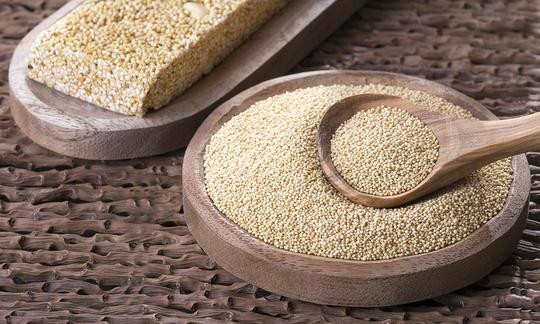

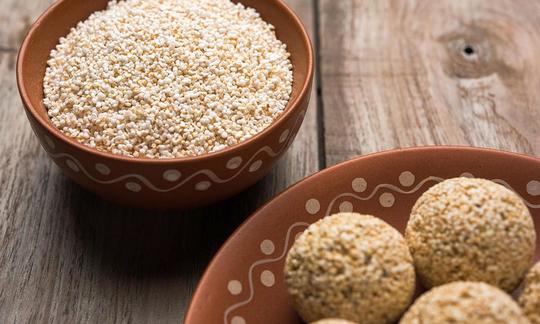

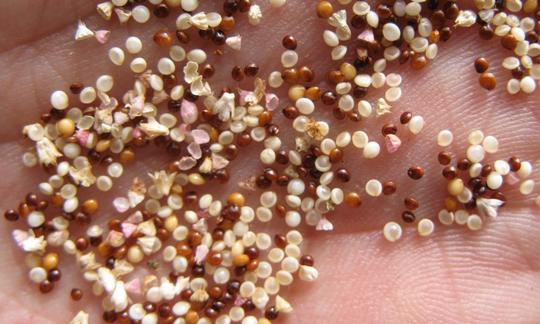

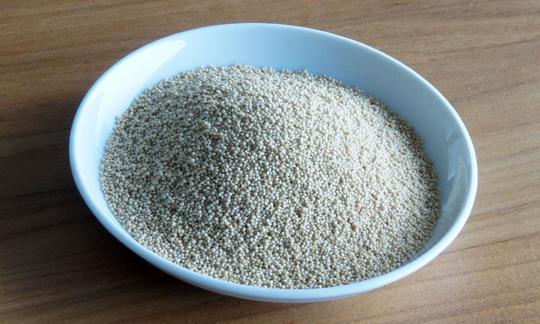



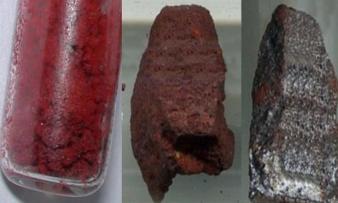



Comments